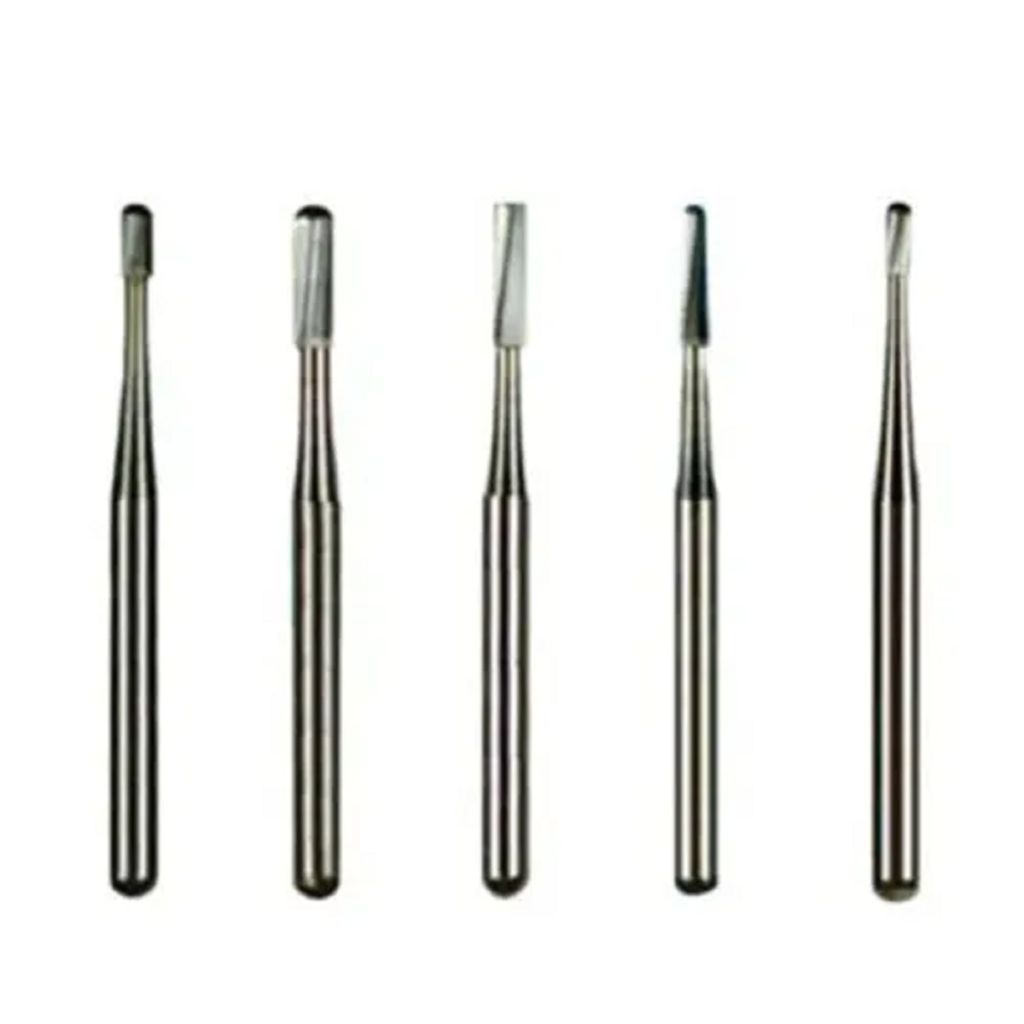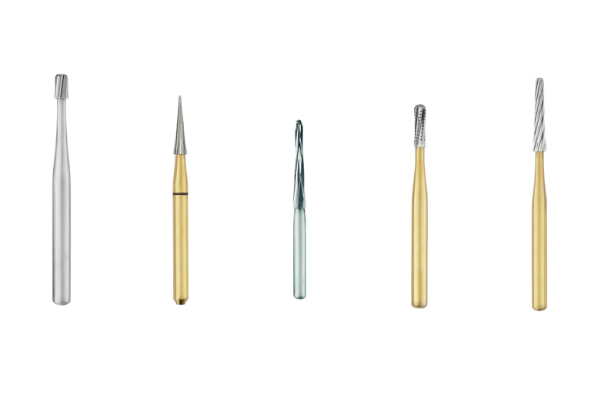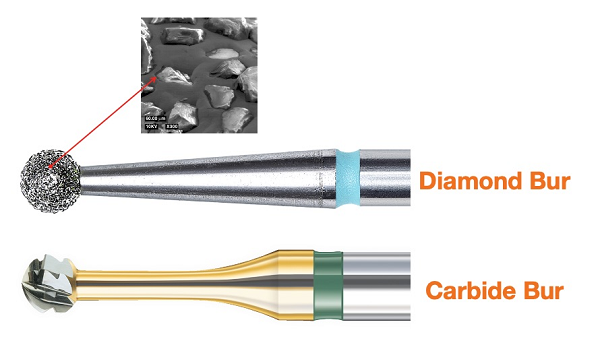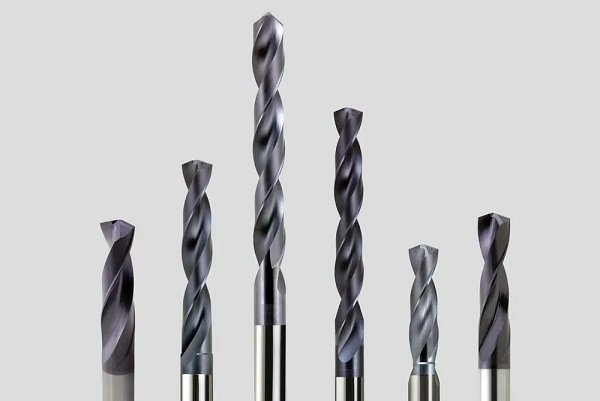During your visit to the dentist, you might notice multiple instruments being used in your procedure. Among the most crucial instruments in dental procedures is the carbide bur. These small, pointed instruments are applied in procedures like cavity preparation and shaping of the tooth. Carbide burs dental are widely applied due to their durability, precision, and effectiveness. In this article, we are going to look at carbide burs dental uses, their types, and comparison with other dental burs. By the end, you will fully understand their importance in modern dentistry.

What are Carbide Burs Dental?
Carbide burs dental are rotary cutting instruments used by dentists for the removal of hard tissue, i.e., enamel or bone, and for contoured dental material. They are made of tungsten carbide, a metal harder than steel.
These burs are more durable in their:
- Cutting
- Sharpness
- Making effective and precise cuts.
Because of their longevity, they are a valuable resource in most dental procedures. Carbide burs do not get dull as fast as steel burs, therefore, they are ideal for procedures that require precision and speed.

Types of Carbide Burs Dental
Carbide burs come in various shapes and sizes, each designed for a specific purpose:
- Round Burs: Ideal for opening up cavities and removing decay.
- Pear-Shaped Burs: Used for cavity preparation and undercuts.
- Inverted Cone Burs: Used for retention grooves and flattening of the floor.
- Straight Fissure Burs: Used for cutting and preparation of cavity walls.
- Tapered Fissure Burs: Used for shaping and contouring in preparations of the crown.
- Cross-Cut Fissure Burs: Enhances cutting efficiency by reducing debris build-up.
- End-Cutting Burs: Primarily to finish the cavity floors
All these are used for specific purposes, allowing dentists to perform procedures with accuracy and with efficiency.
Carbide Burs Dental Use
Applications for carbide burs dental are numerous in a range of dental treatments. The following are some of the methods through which you can apply them in your clinic:
Cavity Preparation
- Tooth structure decay removal
- Designing retentive forms
- Smoothing walls of cavities
Crown and Bridge Work
- Adjustments to crowning margins
- Excess material reduction
- Refining walls of preparations
Restorative Procedures
- Removing old fillings
- Finishing composite restorations
- Occlusal surface adjustments
Using carbide burs dental, you will love their cutting efficiency and control. They allow you to work precisely without creating a lot of heat that can be destructive to pulpal tissue. Carbide burs in dentistry have changed the way dental professionals perform cutting procedures through the use of carbide burs, giving both speed and accuracy.
Carbide vs Diamond Dental Burs
Knowing the difference between carbide and diamond burs enables you to select the appropriate tool for every procedure.

| Feature | Carbide Burs Dental | Diamond Burs |
| Cutting Action | Sharp blades that cut | Diamond particles that grind |
| Best For | Cutting enamel, dentin, amalgam | Grinding porcelain, zirconia |
| Heat Generation | Lower | Higher |
| Lifespan | Shorter but sharper cutting | Longer but gradual dulling |
| Cost | Generally less expensive | More expensive |
You’ll want to use carbide burs dental when you require sharp cutting of tooth structure or previous restorative material. Their blade and geometry enables effective removal with minimal pressure. Diamond burs, on the other hand, perform excellently at grinding and polishing ceramic materials.
Aidite Dental Burs
Aidite is a well-established company renowned for its high-quality dental burs. Their product offerings include:
- CAD/CAM Milling Bur: For precision milling in computer-aided design and manufacturing systems.
- Grinding and Polishing Bur: Ideal for finishing and detailing dental restorations.
- High-Speed Burs: Designed for efficiency and durability.

Aidite’s burs are compatible with most milling machines and are designed to provide durability and performance. Their products are highly trusted by dental professionals across the globe.
Limitations Of Carbide Burs Dental
Although there are many carbide burs dental uses, they do have some limitations:
- Brittleness: Though hard, carbide burs are brittle and might break when subjected to too much pressure.
- Cost: They are also more costly than other burs, including steel burs.
- Specific Applications: Not suitable for polishing or finishing operations where a smooth surface is needed.
Knowing these drawbacks assists in choosing the right bur for every dental operation.
Maintenance Of Carbide Burs
With routine maintenance, your carbide burs dental will serve you reliably through their projected lifespan, saving you money and providing consistent results.
Proper care prolongs the life of carbide burs and maintains patient safety:
Cleaning: Clean debris after every use by ultrasonic cleaning or with a dedicated bur brush.
Sterilization: Autoclave the burs according to the manufacturer’s instructions to avoid cross-contamination.
Inspection: Inspect regularly for wear or damage and replace burs accordingly to ensure cutting efficiency.
The Difference Between CAD/CAM Milling Drills and Carbide Drills
Both CAD/CAM milling drills and carbide drills are applied in dental production, but for distinct applications.
- Carbide Drills: Hand-held and applied to cut and shape teeth.
- CAD/CAM Milling Drills: Engineered to fit in automated CAD/CAM machines to mill crowns, bridges, and other restorations with great accuracy.

Using CAD/CAM Milling Drills
Here are the steps to use CAD/CAM milling drills:
- Calibrate the milling machine properly.
- Select the correct drill for the material to be milled.
- Use proper spindle speed to avoid overheating.
- Check the drill regularly for wear to ensure accuracy.
Knowing how to use CAD/CAM milling drills provides high-quality dental restorations with accurate fits.tions with accurate fits.
FAQs About Carbide Burs Dental
What is carbide burs dental?
Carbide burs are dental tools composed of tungsten carbide, utilized for cutting and shaping hard tissues such as enamel and bone in different dental procedures.
How to use CAD/CAM milling drills?
CAD/CAM milling drills are used in computer-aided design and manufacturing systems to precisely mill dental restorations. Proper calibration and alignment of the milling machine are essential for optimal results.
What is the difference between CAD/CAM milling drills and carbide drills?
The difference between CAD/CAM milling drills and carbide drills lies in their design and application. CAD/CAM milling drills are specifically engineered for automated machine use with precisely controlled geometries for digital dentistry. Meanwhile, handheld carbide burs dental are designed for manual operation in a dental handpiece, with ergonomics and tactile feedback as primary considerations.
What is the difference between carbide and diamond burs?
Carbide burs cut using a blade-like action, and thus they are great for material removal. Diamond burs grind surfaces, giving a finer finish great for polishing and fine detailing.
Do carbide burs cut enamel?
Indeed, carbide burs dental efficiently cut enamel. With their razor-sharp blades, they can remove enamel effectively, but they’re usually applied alongside diamond burs for the best outcomes when preparing teeth for different restorations.
Conclusion
Carbide burs are a critical instrument of modern dentistry, providing precision, effectiveness, and durability. Their capacity for cutting enamel as well as hard tissues without appreciable wear positions them as an instrument of preference for most dentists. Even though they contain some restrictions, appropriate care as well as precise selection guarantees efficacy in a diversity of procedures.
If you’re in search of quality dental burs, Aidite Dental provides a selection of dependable and long-lasting choices for various dental uses. The purchase of top-quality burs improves efficiency and guarantees better patient care.



